Okta and OneLogin are two leading identity and access management (IAM) solutions. n this article, we’ll compare Okta vs OneLogin to help you determine which one is the best fit for your organization
Choosing the right IAM solution can be a tough decision for IT managers. Two popular choices in the IAM market are Okta and OneLogin. Both offer robust features, but how do you decide which one is right for you?
As an IT manager, determining the ideal solution for your organization hinges on your specific needs and requirements. ITo make your decision process easier, we'll break down the key features, benefits, and pricing of Okta and OneLogin. By understanding what each solution offers, you can make a more informed decision that aligns with your organization's goals and needs.
Let's dive into the specifics of Okta and OneLogin to help you determine which IAM solution is the best fit for your company.
A Comprehensive Overview of Okta’s Identity & Access Management
Okta is a cutting-edge, cloud-based identity management solution that caters to businesses across diverse industries, such as information technology, consumer services, energy and utilities, telecommunications, and beyond. This robust platform offers a range of indispensable features to enhance security and efficiency:
- Access Management: Okta empowers organizations to efficiently control and monitor access requests, ensuring that only authorized personnel gain entry to critical resources. This feature is instrumental in safeguarding sensitive data and preventing unauthorized breaches.
- Account Management: With Okta, companies can seamlessly manage user accounts, streamlining the onboarding and offboarding processes. This enhances operational efficiency and security by ensuring user access rights align with their roles and responsibilities.
- Compliance: Okta aids organizations in meeting compliance requirements by providing tools and mechanisms to enforce policies and regulations related to user access and authentication. This feature is particularly valuable for industries with stringent compliance mandates.
- User Provisioning: Okta's user provisioning capabilities automate the provisioning and de-provisioning of user accounts, reducing administrative overhead and ensuring that access is granted or revoked promptly, in line with changing organizational needs.
- Multi-Factor Authentication (MFA): Enhancing security further, Okta offers multi-factor authentication solutions, requiring users to provide multiple forms of identification before accessing critical systems or data. This added layer of security fortifies defenses against unauthorized access.
- Lifecycle Management: Okta's lifecycle management feature extends automation to a variety of workflows, both for internal and external users. This automation improves operational efficiency and ensures consistent and secure management of user identities throughout their lifecycle.
- Universal Directory: Okta provides businesses with a unified active directory, simplifying the management of multiple users, devices, applications, and APIs. This centralization of identity management streamlines operations and reduces complexity for administrators.
A Comprehensive Overview of OneLogin’s IAM
OneLogin offers a comprehensive cloud-based identity and access management solution, revolutionizing how users manage and secure access to a wide array of digital resources, including web applications, data centers, and cloud storage.
This powerful platform is equipped with a range of sophisticated features designed to enhance security and streamline user access, ensuring organizations can navigate the digital landscape with confidence. The key features are:
- Single Sign-On (SSO): OneLogin simplifies the user experience by enabling them to access multiple applications with a single set of credentials. This boosts convenience and enhances security by reducing the risk associated with password fatigue.
- Web Access Management: The platform seamlessly integrates with existing web servers, fortifying web applications' security. This proactive approach safeguards sensitive data and ensures that only authorized users gain entry.
- Adaptive Authentication: Employing advanced machine learning algorithms, OneLogin's adaptive authentication evaluates user behavior and context to dynamically adjust security measures. This means that users are prompted to provide additional authentication factors only when necessary, striking a balance between security and usability.
- Multi-Factor Authentication (MFA): OneLogin offers a robust MFA system that goes beyond traditional username and password combinations. Users can authenticate their identities using various methods, such as one-time passwords (OTP) delivered via mobile apps or text messages. Additionally, it supports integrations with third-party security solutions like Duo Security and RSA for an extra layer of protection.
- Mobile Identity Tracking: In today's mobile-driven world, OneLogin doesn't leave any device behind. It allows for comprehensive identity tracking on mobile devices, ensuring secure access on the go.
Okta vs OneLogin: Key IAM Parameters for Evaluation
Effective identity and access management are paramount for IT departments and everyday users. IT departments leverage these solutions to enhance access security while minimizing the frequency of password resets. Furthermore, these systems are pivotal in safeguarding an enterprise network, particularly for businesses with dedicated security operations centers (SOCs).
Conversely, everyday users seek streamlined access to their accounts, free from the burdensome task of remembering complex passwords and navigating intricate login procedures. The ideal identity management software strikes a harmonious equilibrium between robust security measures and user-friendly experiences.
Let's comprehensively compare Okta vs OneLogin, scrutinizing their respective approaches to achieving this delicate balance and ultimately determining which solution offers superior capabilities.
1. Features & use cases of Okta & OneLogin
Both Okta and OneLogin offer robust solutions for simplifying and enhancing the security of user logins. These platforms provide SSO and MFA, critical components for safeguarding your online accounts. Additionally, they offer convenient tools such as password managers, browser extensions, and mobile apps to streamline the process of accessing your accounts.
Okta Workforce Identity Features:
One of Okta Workforce Identity's standout features is \"ThreatInsight,\" which plays a pivotal role in fortifying your account's security. ThreatInsight employs a data-driven approach to identify and thwart unauthorized access attempts, particularly from suspicious IP addresses.
This proactive defense mechanism effectively shields your network from a wide array of threats, including phishing attacks, credential stuffing, brute force attacks, and distributed denial-of-service (DDoS) attacks.
OneLogin Features:
OneLogin boasts a similar security feature known as \"SmartFactor Authentication.\" However, it takes an even more proactive stance in protecting your accounts. SmartFactor Authentication leverages a holistic approach that analyzes factors such as user location, device information, and behavior to detect potentially high-risk login activities.
What sets it apart is its utilization of artificial intelligence (AI) to compute a risk score for each login attempt. This enables OneLogin to not only ascertain the legitimacy of login credentials but also to preemptively block high-risk login attempts, thereby bolstering your security posture.
2. API integrations to enhance connectivity
In the realm of identity management software, the breadth and depth of API integrations are pivotal in determining its utility.
Okta:Okta Workforce distinguishes itself with an expansive array of over 7,000 third-party software integrations encompassing cloud, on-premises, and mobile applications. These prebuilt integrations are meticulously cataloged within the Okta Integration Network (OIN). The versatility of Okta extends to a multitude of functionalities, including:
- API Management: Facilitating seamless interaction with application programming interfaces.
- Cloud Access Security Broker (CASB): Bolstering cloud security through robust access control measures.
- Customer Data Integrators: Enabling streamlined integration of customer data.
- Lists and Human Resources Systems: Simplifying HR-related processes.
- Endpoint Security and Management: Ensuring comprehensive endpoint security.
- Security Analysis: In-depth assessment of security measures.
- Virtual Private Network (VPN): Enhancing secure network access.
Remarkably, should a specific integration be absent from the OIN, Okta empowers users with the App Integration Wizard (AIW). This ingenious tool allows users to create custom integrations tailored to their organizational needs.
OneLogin:OneLogin, on the other hand, boasts an impressive catalog of over 6,000 pre-built integrations, encompassing renowned applications such as Salesforce, Office 365, and Slack. Noteworthy features include:
Google Apps Integration: OneLogin simplifies the use of numerous Google Workspace apps by offering a consolidated Google Apps integration, eliminating the need for individual setup.
It's worth noting that, unlike Okta Workforce, OneLogin requires users to create an account before gaining access to the full spectrum of app integrations. However, akin to Okta, OneLogin also permits users to establish custom integrations for applications not featured in their catalog.
In conclusion, both Okta vs OneLogin offer robust API integration capabilities, each with its unique strengths and approaches, catering to diverse integration needs.
3. User experience
When it comes to user experience, Okta Workforce and OneLogin have garnered reputations for their usability, although there are distinctions worth noting.
Both platforms offer a suite of automation features and identity and access management software designed to assist IT departments in simplifying account management and enhancing the login process for employees and other end users. Moreover, both Okta Workforce and OneLogin feature streamlined Single Sign-On interfaces that facilitate user logins and the monitoring of accessed resources.
However, it's important to highlight that while both solutions are user-friendly, Okta Workforce stands out with a reputation for delivering an even more seamless user experience, according to feedback from Okta users.
4. Pricing & user rating
Understanding the true cost of an identity management solution requires careful consideration, given the distinct pricing models offered by various vendors. In our comparison of Okta Workforce and OneLogin, let's delve into their pricing structures to help you make an informed decision.
Okta Workforce Identity Pricing and Cost AdviceOkta Workforce adopts a per-user pricing model and offers a range of products, each with its own cost:
- Single Sign-On (SSO): Priced at $2 per user per month, this package includes features such as integration networks, ThreatInsight, desktop and mobile SSO for both cloud and on-premise apps, basic Multi-Factor Authentication (MFA), and third-party MFA integration.
- Adaptive SSO: For $5 per user per month, you get all the features of SSO, plus contextual access management and authentication based on risk.
- MFA: At $3 per user per month, this package includes one-time passwords, push notifications, text-based authentication, and Universal 2nd Factors (U2Fs).
- Adaptive MFA: Priced at $6 per user per month, this package builds on MFA by adding contextual access management, incorporating factors like location (detecting new cities, states, or countries), network, device, and risk-based authentication.
Okta enforces a minimum annual contract value of $1,500. Larger enterprises can negotiate substantial discounts, and the SSO plan offers a free trial, while customer support packages are available separately.
Okta user rating
- G2- 4.4/5
- Capterra- 4.5/5
OneLogin's Pricing:OneLogin offers three distinct plans for workplace identity management:
- Starter: Starting at $2 per person per month (minimum 25 users), this plan includes integrations with unlimited apps, desktop Single Sign-On, support for a single language, and standard reporting.
- Enterprise: Priced at $4 per user per month (minimum 10 users), this plan adds a Multi-Factor Authentication plan, custom app connectors, security policies, support for multiple languages, and VPN integration.
- Unlimited: At $8 per user per month (minimum 5 users), this top-tier plan includes user provisioning, custom fields, HR integrations, onboarding and offboarding checklists, active directory, and user enhancements, among other features.
OneLogin offers discounts of 5% for quarterly subscriptions and 10% for annual subscriptions. The Enterprise plan allows a free 30-day trial. All office plans include The OnePlus support package, while OnePrime and OneVIP come at additional costs.
OneLogin user rating
- G2- 4.4/5
- Capterra- 4.5/5
In the pricing and user ratings category, Okta slightly edges ahead due to its advanced features like ThreatInsight and integrated lifecycle management, but both solutions boast strong reputations for enterprise workplace identity applications.
Okta vs OneLogin- Comparison Table
Here's a comparison table between Okta va OneLogin to help you make an informed decision:
Now that you've gained a deeper understanding of the distinctions between Okta vs OneLogin, you're better equipped to make an informed decision that aligns with your business goals, enhancing productivity and efficiency. However, there's another player in the field of identity access management worth considering for your growing enterprise: Zluri. Let's explore what Zluri is and how it operates.
Which IAM Solution is the Best Fit for Your Business?
Zluri is an all-in-one SaaS management platform (SMP) designed to streamline user identity and access policy management, enforce robust authentication and authorization controls, and comprehensively monitor user activity and compliance.
Let's delve deeper into Zluri's feature-rich offering and understand why it stands out as a superior choice:
1. Effortless access provisioning for easy Onboarding:
Zluri transforms the user provisioning experience. It integrates seamlessly with your organizational systems, allowing for swift integration of new team members. Zluri ensures that digital identities are aligned with accurate information during this integration.

This meticulous attention to detail allows IT administrators to assign tailored access levels promptly. The result? Accelerated onboarding processes devoid of security loopholes, minimizing the risk of unauthorized access.
2. Centralized Access Control and Real-Time Monitoring:
Zluri's interface provides a unified, intuitive dashboard for managing access control. From here, administrators can minutely regulate which applications team members can access. The real-time monitoring capabilities are pivotal.
Detailed insights into login and logout activities empower organizations to manage permission levels with precision. By swiftly identifying and addressing suspicious activities, Zluri fortifies your security infrastructure, ensuring unauthorized access attempts are thwarted promptly.
3. Seamless HR Integration for Enhanced Accuracy:
Zluri's integration with HR systems is a game-changer. It guarantees that employee information is not only up-to-date but also accurate. This integration is crucial during various employee lifecycle stages, including onboarding, changes within the organization, and offboarding.
The result? A seamless and secure IAM process, minimizing the potential for errors and ensuring operational continuity, even during personnel transitions.
Consider a new employee joining your organization. Zluri's IAM solution seamlessly integrates their details with your systems. This precision ensures that their digital identity accurately aligns with their roles and responsibilities. As a result, your IT admins can promptly assign them tailored access levels. This streamlines the onboarding process, accelerates productivity, and minimizes security risks.
4. Comprehensive Auditing and Detailed Reporting:
Zluri provides comprehensive auditing capabilities. Regular audits are conducted, generating detailed reports that cover a spectrum of activities.
From tracking login and logout events to overseeing group creation and user profile modifications, Zluri offers a granular view of your IAM landscape. These reports are invaluable for maintaining compliance, streamlining audit processes, and safeguarding sensitive data from unauthorized access.
5. Real-Time Compliance Adherence and Proactive Security:
Zluri's real-time monitoring is not just about observing user activities; it's about ensuring compliance with industry standards and regulations. By proactively identifying and responding to unauthorized access attempts, Zluri elevates your organization’s security posture.
Its AI-driven approach allows for the swift detection of anomalies, allowing preemptive actions that protect your business from potential breaches.
Zluri's IAM solution is a comprehensive package designed for the challenges of the digital era. Its seamless integration capabilities, centralized access control, meticulous auditing, and proactive security measures make it the ideal choice for businesses seeking a robust, future-proof IAM solution.
By choosing Zluri, businesses can confidently navigate the complex realm of IAM, knowing that their data and digital assets are fortified against the ever-evolving landscape of cyber threats. To explore these features further, book a demo with us today.









.svg)



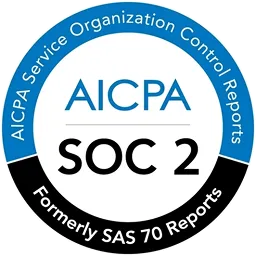
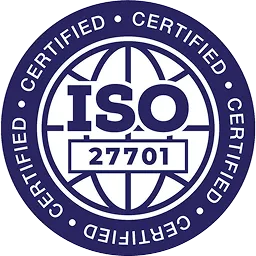
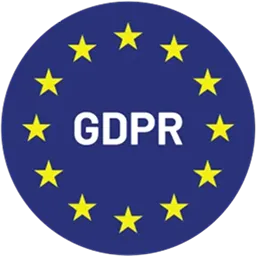
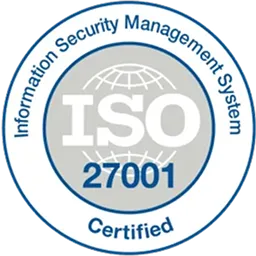
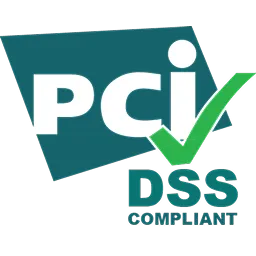
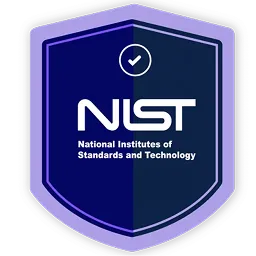
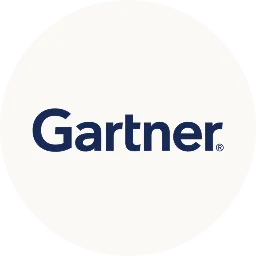
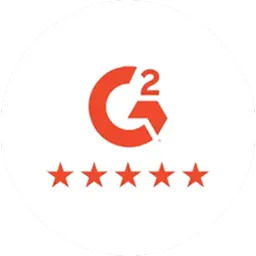

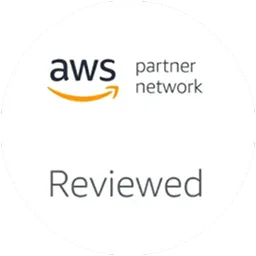

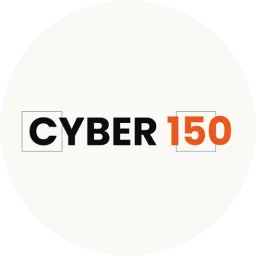






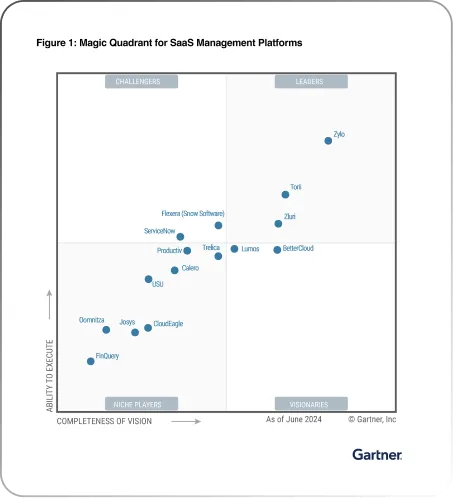







.webp)







.webp)
.webp)





.webp)